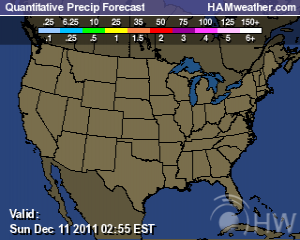Sun Erupts A Massive Class X-6.9 Solar Flare
An extremely powerful solar flare, the largest in over four years, rocked the sun early Tuesday (Aug. 9), but is unlikely to wreak any serious havoc here on Earth, scientists say.
“It was a big flare,” said Joe Kunches, a space scientist with the National Oceanic and Atmospheric Administration (NOAA)’s Space Weather Prediction Center. “We lucked out because the site of the eruption at the sun was not facing the Earth, so we will probably feel no ill effects.”
Today’s solar flare began at 3:48 a.m. EDT (0748 GMT), and was rated a class X6.9 on the three-class scale scientists use to measure the strength of solar flares. The strongest type of solar eruption is class X, while class C represents the weakest and class M flares are medium-strength events.
The flare is the largest one yet in the sun’s current cycle, which began in 2008 and is expected to last until around 2020. Solar activity waxes and wanes over an 11-year sun weather cycle, with the star currently heading toward a solar maximum in 2013
“This flare had a GOES X-ray magnitude of X6.9, meaning it was more than 3 times larger than the previous largest flare of this solar cycle - the X2.2 that occurred on Feb 15, 2011,” scientists with NASA’s Solar Dynamics Observatory, a space observatory that monitors the sun, wrote in an update.
Before the Feb. 15 storm, the largest recent solar flare occurred in December 2006, when an X9-class solar storm erupted from the sun.
Solar flares occur when magnetic field lines on the sun get tangled up into knots, building potential energy until they reach a tipping point. Then, that energy is converted into heat, light and the motion of charged particles.
While all X-class solar eruptions are major events, they pose the greatest threat to Earth when they are aimed directly at the planet. During those events the sun often releases a cloud of plasma called a coronal mass ejection into space, and sometimes toward Earth. This ejection hurls charged particles that can damage satellites, endanger astronauts in orbit, and interfere with power systems, communications and other infrastructure on the planet.
Today’s solar flare, and resulting coronal mass ejection (CME) was not aimed at us, however.
“Because of its position the CME is going to shoot out into space and not be Earth-directed, and we don’t expect any big geomagnetic storm with this,” Kunches told SPACE.com. “We did luck out. If this would have happened a week ago, who knows?”
Communications blackouts reported
However, some VLF and HF radio communications blackouts have been reported, according to Spaceweather.com, a website that monitors space weather events.
Whatever particles do head our way should reach us in a few days.
“The cloud will probably miss Earth,” SpaceWeather.com wrote. “At this time, however, we cannot rule out a glancing blow from the flank of the CME on or about August 11th.”
The plus side of such a collision is often unusually spectacular auroras, or Northern and Southern Lights, which occur when charged particles interact with Earth’s magnetic field.
3 Responses to Sun Erupts A Massive Class X-6.9 Solar Flare
You must be logged in to post a comment Login





Pingback: Sun Erupts A Massive Class X-6.9 Flare - Myweathertech.com … | Earth Star Mysteries
Pingback: Sun Erupts A Massive Class X-6.9 Flare - Myweathertech.com … | Earth Star Mysteries
Pingback: Sun Erupts A Massive Class X-6.9 Solar Flare « End Times Signs